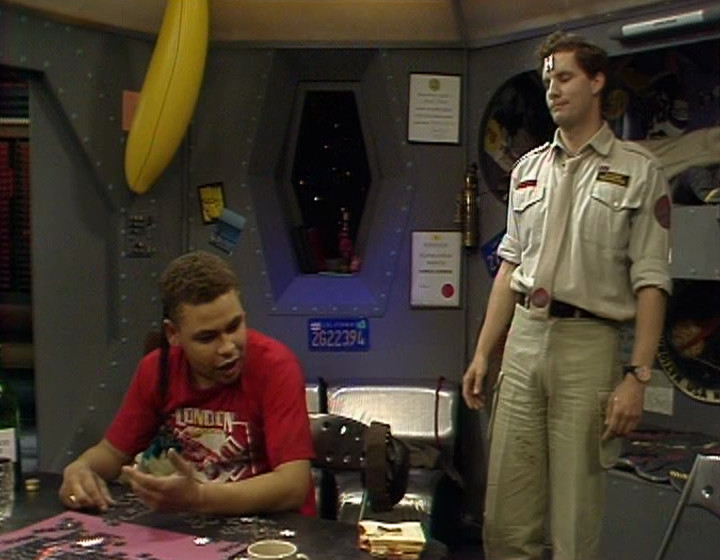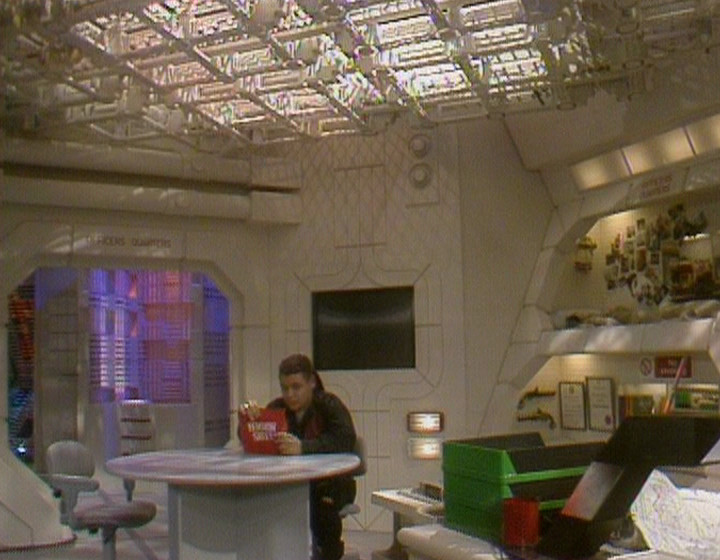Many, many years ago, on a forum known as NOTBBC, somebody said something which caused me a fair amount of anguish. I can’t remember the exact words. Nor can I find the forum post in question. But I remember well enough the point of it.
It was a rather sharp remark about how fandom, in its various forms, often seemed more interested in making lists of things, instead of actually analysing the show they were a fan of. And that most of these things were done because people enjoyed the list creation itself, and all the mental tics which go along with that, rather than actually talking about a show properly.
It stung. It was unfair. It was insulting. And it maybe had a little more truth to it than I cared to admit.
* * *
Over the years, I feel like I’ve got better at that aforementioned “talking about a show properly” business. Oh, there are people who do a much better job than me. But I’m not too terrible these days.
And yet, when I publish things like this piece of nonsense, on the various ways a faintly obscure Red Dwarf set was reused, the spectre of that NOTBBC thread hangs over me. After all, what is that article, but the most pointless list in the world?
I have an answer. It’s an answer buried in Red Dwarf fanlore, I admit. But I have one. It concerns an endless argument about those first two series of Dwarf: about the transition between Paul Montague, the first production designer for the show, and his replacement Mel Bibby.

Series 2 bunkroom

Series III bunkroom
On the All Change documentary on the Series III Red Dwarf DVD, we get the gist of said argument:
CRAIG CHARLES: We knew a lot of things had to change. We were very unhappy with the sets, the painting of the sets. Everything was like ocean grey, military grey. My memory of Series 1 and 2 is very much black and white, cos there was very little colour, you know?
DOUG NAYLOR: We wanted to give it a different look, and we were in a different position, we weren’t so much bystanders. We were aware of some of the directions which had been given for the sets for the first series, which was Ed wanted it to be a grey submarine look. And that sounded fine, from being on the outside, but then it wasn’t really a grey submarine look, it was a grey, kind of wooden TV set look.
CHRIS BARRIE: Series 3 in all areas, there was a big lift, you know, in all departments.
DOUG NAYLOR: Mel wasn’t available for those early series, and then he became available for Series 3, so Rob and I were very enthusiastic for getting him on board, and we had a long talk with him at the beginning, and we talked about our influences being Alien, and he took that on board, and seemed to have a plan where with no money, he could give us a look which was incredibly more on-screen than anything we’d had so far.
Or, put rather more pithily by Doug Naylor on his interview on the Series 2 DVD:
DOUG NAYLOR: My nightmare was that we were going to end up with something that would look like Blake’s 7, and I was absolutely assured it wouldn’t. And we didn’t end up with something like Blake’s 7. It wasn’t as good…
Now, it would be a lie to say this was the only opinion out there over the years. Not least, original designer Paul Montague defended his work in the DVD documentary The Beginning:
PAUL MONTAGUE: Ed Bye gave me a tape of Dark Star, and as far as I was concerned it had the right feel. Two men alone in space… I also remember when I was a small boy, at a boarding school during the war, and everything was dark. The towns were dark. The roads were dark. Especially the country. And all you’d hear was a hiss, from a gaslight. And somehow, I remember that. And I just wanted this feeling of isolation, of dark.
The influences on Red Dwarf has rarely been talked about more lyrically than the above.
Of course, you could argue about this issue all day, and as part of Red Dwarf fandom for years, I literally did. Personally, I love those sets for the first two years of the show, and think Doug, Craig, and the rest are far too harsh on them. And not because of some obnoxious “I preferred the show when it looked cheap” nonsense, which is always the biggest load of bullshit going.1 I literally just like how the sets look.
For the record, I also love the more Alien-inspired look for Series III onwards. They both work.
Still, there is a specific point which my ridiculous article about those pipe wall sections makes. Which is: regardless of whether you love or hate those early sets, the constant reuse is testament to how much the production did with the money they had. They were constantly swapping things round to make the ship feel as big as possible. The result is an undeniable success: the same pieces endlessly reused, but it being far from obvious that’s what the production was doing.
In many ways, I think Series 1 actually feels bigger than any other series in terms of this; we simply see more of the ship than we do in many later episodes. For this alone, I think Paul Montague deserves a little more consideration and applause than he often gets.
All of which is true. But it’s not why I wrote that article. Not really.
* * *
OK, then. Would you buy the idea that it’s a logic puzzle? Think of it in terms of The Krypton Factor‘s intelligence round:
Figuring out bits of reused set is a lovely little puzzle in its own right. Has something been repainted, turned upside-down and back-to-front, turned on its side, and seen in an entirely different context? There’s fun in simply figuring out what something is.
Again, this is definitely part of it. But it’s not the full story either.
* * *
So much has been written about Red Dwarf over the years, rather too much of it by me. And yet most of it doesn’t really manage to nail exactly what I’m fascinated by about the show. Truth be told, if I could know anything, it would be: what was it like to sit in the room where Rob Grant and Doug Naylor wrote? What did they say to each other? What was their process? You can get brief snatches in old Smegazine interviews, but at best, it’s like listening through the door at a muffled conversation.
But the next best thing is a little more achievable. One of my favourite things on any of the Red Dwarf DVD releases is this 13 second clip. It’s of Chris Barrie, warming up the audience during Series 1:
In those few brief seconds, I am magically transported to BBC Manchester in 1987. And we get just the merest glimpse of what it was like to be in that studio audience.
And that’s really what my writing attempts to do. Build a time machine, in order to throw myself back through the decades. So I can lean against the wall of that studio, examining those sets, figuring out which piece of wood went there. By learning about prosaic production constraints, you can almost reach out and touch everything. If only for a short blink of time, before I’m rudely catapulted back to the present.
In many ways, maybe that’s just as futile as those lists, long ago on NOTBBC. Maybe I should exclusively concern myself with placing Red Dwarf into its socio-economic context, or something.
But dammit, the lure of time travel is just too much for me to resist.
Not that that stopped someone who worked on the show doing a podcast interview where I was accused of saying directly that. Despite the fact that I’ve always been at pains to say otherwise. But I promised never to talk about that, so I won’t. ↩

5 comments
Doolz on 23 June 2023 @ 12pm
It’s like forensics. It’s vital.
Paul Hughes on 23 June 2023 @ 4pm
You’re so right about how big the ship feels in the first series. Lister looking for the Cat in Waiting for God is probably the best example, and I love how that impression of scale is achieved through a combination of sets, dialogue, sound design, shooting on the gantry, Lister’s bike. “Holly? Can you still hear me?”…
Ross Baker on 23 June 2023 @ 4pm
Lovely stuff.
But I don’t think any of it actually needs justifying. The NOTBBC argument is similar to the discussions I used to witness on Cookdandbombd, in which people would often try to set boundaries about what could be discussed, and how, and why. And people also really overstated their own importance. I find it so tiresome: fandom is about people’s reactions to things they love, be they deep or light hearted. So what if list making is enjoyable in itself? As long as the list’s creation was in response to the particular topic being discussed, then it’s a perfectly valid expression of fandom. God forbid comedy might inspire someone to have fun.
Yes, this is a bugbear of mine.
Dave on 23 June 2023 @ 6pm
Nothing wrong with a good list, mind.
John J. Hoare on 23 June 2023 @ 8pm
You are, of course, entirely correct. It doesn’t, and now I’m away from those forums, very very few people have ever asked me to do so.
But my brain still works on things, late at night. Nothing needs justifying, but understanding why I write what I write felt like a useful exercise. It was the start of the thought process, not the end. (In fact, I perhaps made a mistake bringing it back at the end of the piece. God damn my desire for a neat little bow at the end.)
Comments on this post are now closed.